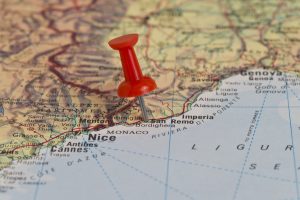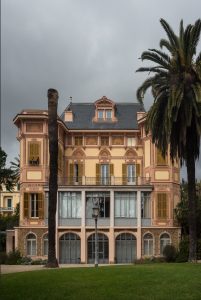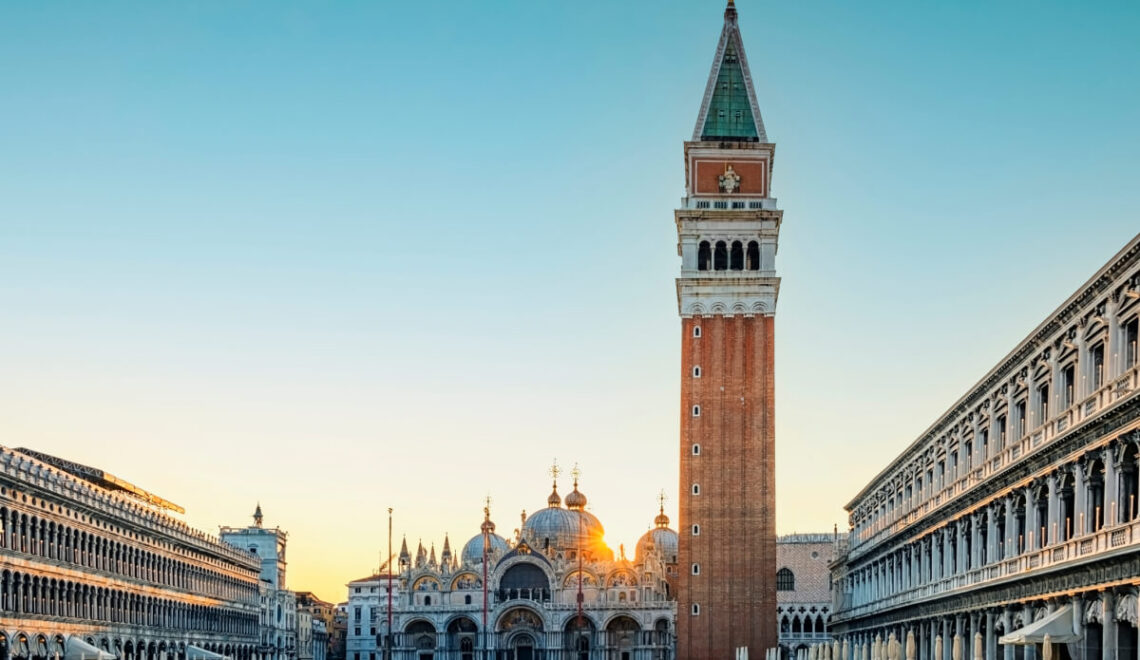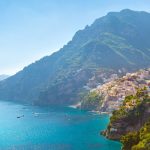
Discover what to see in Sanremo in a few days: the Casino, the Ariston Theater, the Queen Elena Gardens, the Sanctuary of the Madonna della Costa, Villa Nobel and the flowers.
Discovering Sanremo: what to see and how to get there
The Ligurian city is a symbol of Italy in the world thanks to the annual Sanremo Festival, which has told and retold Italy’s history and customs through song for more than half a century. The Mediterranean climate and coastal landscape make it a very attractive city that can be visited all year round. For more than half a century, it has hosted Italy’s most famous music festival, making it the nerve center of Italian music for a week in February. Visiting Sanremo is always a good choice, but doing so during music festival week is an exquisitely unique experience.
Where Is Sanremo?

Sanremo, often anglicised as San Remo, is a picturesque coastal city located in the Liguria region of northwestern Italy and founded by the Romans. Nestled between the Mediterranean Sea and the foothills of the Ligurian Alps, it is renowned for its mild climate, vibrant flower cultivation, and scenic beauty. This is why it is called the pearl of the “Riviera of Flowers.”
Sanremo lies on the western part of the Italian Riviera, close to the border with France, a short distance from Nice, making it a popular destination for tourists seeking a blend of Italian charm and Riviera glamour. The city is also famous for hosting the annual Sanremo Music Festival, a major event in Italian popular music. Sanremo’s rich cultural heritage, historic old town, luxurious casinos, and lush gardens contribute to its allure as a destination of choice for visitors from around the world.
Italo takes you to Genoa, in the heart of Liguria, and getting to Sanremo is very simple.
Things to Do And to See In Sanremo Italy
In addition to its beautiful flowers, Sanremo offers many entertainment opportunities such as bingo and the historic Casino, the world-famous Ariston Theater, but also enchanting experiences in the Regina Elena gardens, cultural-religious in the Sanctuary of the Madonna della Costa, and even scientific-artistic with the Villa Nobel.
The Flowers of Sanremo

The flowers of Sanremo bring the fragrance of Italy to the world. The Ligurian city enjoys a strategic geographic location: it is protected from northerly winds that result
in a low rainfall rate that enables both flowers and tropical plants to grow luxuriantly in the various botanical gardens scattered throughout the Riviera dei Fiori. During the week of the Festival, the precious floral production intensifies. At first, they were used to adorn the stage, then in recent years, the gesture of handing the singers and guests traditional bouquets of flowers made them a symbol of the city. This gesture has undergone several evolutions: one in the gesture itself, initially given to female artists only, the other on the gender theme, whereby for the first time in the latest edition, flowers were also presented to men.
Sanremo Casino

One of the first experiences you should enjoy once you arrive in Sanremo is a visit to the historic Sanremo Casino in the heart of the city. It’s an imposing building in Liberty Deco style, conceived and designed by the Parisian architect
Eugenio Ferret in 1905. The Casino is one of the most famous and important Italian gambling houses still in operation, together with the Casino of Venice, the oldest, and the Casinò de la Vallée of Saint-Vincent in Valle D’Aosta. It experienced a short period of closure during the Second World War, and once it reopened, it never closed again and continues to be enjoyed by millions of tourists from all over the world. It has been the scene of many historic Italian evenings and made the fortune of the Music Festival, which was first held in the casino itself from 1951 until 1976, for 26 years! It comprises several Halls with a diversity of elegance and decor, where traditional games are played, such as poker, slot machines, and cash game tournaments.
The entire structure is adorned with Murano glass chandeliers and paintings that convey an oriental atmosphere, and it has a sixteenth-century Hall with an ornate wooden coffered ceiling. Great figures from the artistic scene of show business have spent their time in these gambling halls, the most prominent of which include Vittorio De Sica, Princes Rainier and Grace of Monaco, and King Leopold of Belgium, but also many singers who, after the Festival evenings, would enjoy themselves, and still do, with a bit of wholesome gambling.
The real heart of the Casino is precisely the Theater where the Festival had its heyday and where Luigi Pirandello with actress Marta Abba and also Pastonchi, famous for the idea of literary Mondays, gave wonderful performances. But why was the Sanremo Festival held in a Casino? To broaden the horizons of this facility, which by hosting a singing and cultural event alleviated the post-World War II crisis. In 1977, the Festival moved to the Ariston; however, the Sanremo Casino Theater did not lose its original function; in fact, it still hosts major events, with the Symphony Orchestra performing more than 100 concerts a year. A visit to the casino is therefore a must for visitors to Sanremo.
The Ariston Theatre

The Sanremo Ariston Theatre took over the historic Festival della Canzone Italiana from the Casino. A musical festival that every year is eagerly awaited by a vast Italian and international audience. Walking through the city streets and taking a selfie in front of the theater is now a hallmark of national-popular culture for music fans. But let’s take a step back: the Sanremo song festival started out as an attempt to draw visitors to the city during the winter, being a seaside town whose prosperity is dependent on tourism. The first attempts were unsuccessful; in fact, in its early years, the Festival was broadcast live only on radio from the Sanremo Casino. It enjoyed little success until 1955 when, instead, it was broadcast live on TV by the fledgling RAI state broadcasting service; that’s when it began to gain traction and attract attention. Dramatic upturns have always been the order of the day at Sanremo, and neither was it ever spared criticism concerning the Festival’s vocation to modernize and keep up with the times. Regarding the Ariston Theater itself, it is an immense, majestic, and amazing structure, especially for the technology of the time with which it was equipped during its construction.
The theater was built on land purchased in the 1940s by Commendatore Aristide Vacchino, and it was not until 1953, after ten years of hard work, that this grand architectural masterpiece was completed. Today, it is known as the world-famous venue where the Song Festival is staged, but outside the week of the Festival, it retains its beauty and houses a multi-screen cinema and a theater. Ballet, opera, exhibitions, cabaret, and other musical events, such as the Tenco Prize are staged there. The main hall of the theatre has a maximum seating capacity of 2,000 and is decorated with luxurious friezes. It is a magical place where you can sense the history of Italian music, luxury and a distinctive atmosphere. If you love the Festival, don’t miss the chance to attend the Sanremo evenings live by purchasing one of the many season tickets or single tickets.
The Sanremo Music Festival
The Festival di Sanremo, also known as the Sanremo Music Festival, is a legendary Italian music event that has captivated audiences for decades. Held annually in the picturesque town of Sanremo, inside the Ariston Theatre, this music festival is not only a celebration of Italy’s rich musical heritage but also a significant cultural event.
Broadcast worldwide by the ubiquitous RAI state public broadcaster, it is an event that rivets millions of viewers in Italy and beyond to their TVs.
The Sanremo Festival lasts for five days, usually from Tuesday to Saturday. The last night is watched by millions of Italians and usually ends very late until the winner is announced.
Established in 1951, the festival has played a pivotal role in shaping the careers of many renowned Italian artists and has introduced numerous iconic songs to the world. It is a glittering showcase of talent, glamour, and passion, where Italy’s top musicians compete for recognition and prestige. With its unforgettable performances, elaborate stage designs, and a tradition of showcasing both established and emerging talent, the Festival di Sanremo continues to enchant music enthusiasts and capture the essence of Italian music and culture.
The Sanremo Festival has come a long way in all these years. So many new faces have been successful both in Italy and around the world, from Nilla Pizzi to Luigi Tenco, from Laura Pausini to Andrea Bocelli, all the way to the resounding international success of Maneskin. From Sanremo’s Casino Theatre until the move to the Ariston in 1976, many different music genres and hundreds of singers have succeeded each other on that stage. The rendition approach has progressed from original live music and singing to playback in the 1980s, from audio tracks and lyrics with romantic and sentimental themes to those addressing social issues and modern genres such as rap.
Among the San Remo winners, the most famous beyond Italian borders are:
- Måneskin (winner in 2021)
- Marco Mengoni (winner in 2013 and 2023)
- Eros Ramazzotti (winner in 1986 and in 1984 in New Proposals Section)
- Laura Pausini (Winners New Proposals Section 1993)
- Domenico Modugno (winner in 1958, 1959, 1962, 1966)
- Al Bano (winner in1984 with Romina Power)
- Toto Cotugno (winner in 1980)
- Il Volo (winner in 2015)
- Adriano Celentano (winner in 1970)

The Regina Elena Gardens
Immersed in a magical atmosphere, you can continue your Sanremo stroll and head for a very picturesque natural site known as the Regina Elena Gardens, a park teeming with palm trees located at the summit of a high-ground historic center district better known as La Pigna. A short walk takes and a scenic stairway takes you to the Sanctuary of the Madonna della Costa. This is one of Sanremo’s iconic symbols; from here, you can enjoy a splendid view of the town, the port, and the roofs from which the church bell towers rise. Flights of steps intersect all the Garden’s sectors, which are home to tall plants such as the ornamental palms of the Canary Islands, cedars and a copse of pines. From every part of the Gardens you can see the sea enclosed inside by the suggestive and spectacular frame of the gulf. The sound of water trickling through rock pools soothes as you walk by, just like in the Park de la Colline du Château in Nice. Without a doubt, this is one of Sanremo’s most enchanting places.

Sanctuary of The Madonna della Costa
For a moment of contemplation away from Sanremo’s vibrant bustle, walk to the Santuario della Madonna della Costa, about 100 meters above sea level; it’s a particularly scenic route because you have to cross Sanremo’s historic center and climb the steps that cross the Regina Elena Gardens to reach the renowned La Pigna district. The effort of your endeavors will be more than rewarded by the breathtaking panorama, the intertwining “carrugi” alleyways, and the historic dwellings. An inspiring walk takes you to Sanremo’s quintessential place of worship dedicated to the Madonna, erected on high ground to dominate the surrounding landscape. Dating back to 1361, the Sanctuary’s Baroque facade features depictions of the Assumption and the Saints Syro and Romulus. Its interior houses a historic organ, wooden statues and paintings that distinguish one of the town’s most beautiful destinations.

Villa Nobel
Fans of science but also art, can wind up this trip to Sanremo by visiting Villa Nobel and its science museum. This historic villa is a jewel of Moorish revival architecture and one of the town’s most imposing buildings. It was the home of the Swedish scientist Alfred Nobel, inventor of dynamite and creator of the worlds’ most important literary and scientific accolade, the Nobel Prize, which took his name. Nobel chose Italy and the Riviera di Ponente for his retirement years, and it was for this purpose he bought this villa which had been built in 1870, and in which he set up a laboratory for studies of his invention, dynamite. Today, the villa hosts a museum dedicated to Alfred Nobel himself, the scientific discoveries of the 19th century and the winners of the Nobel prizes. The grounds of the villa comprise to a beautiful garden adorned with local plants and rare exotic species
La Pigna Neighbourhood
The “La Pigna” neighbourhood is known for its unique and charming character, characterised by a maze of narrow streets and alleyways that intertwine like the scales of a pine cone, giving the neighbourhood its name, “La Pigna” (pine cone).
This ancient heart of the City of Flowers is rich in history and culture, dating back to around the year 1000. It is still today the beating heart of the Ligurian town. Visitors can explore the picturesque streets, mediaeval fortifications, and historic architecture that make “La Pigna” a captivating place to visit.
The neighbourhood offers a glimpse into the authentic, old-world charm of Sanremo, with its covered alleys, little squares, and terraced houses. It provides a unique and immersive experience, allowing visitors to step back in time and appreciate the rich heritage of this beautiful coastal town on the Italian Riviera.
Fort of Santa Tecla
The Fort of Santa Tecla is a historic fortification constructed in the 18th century and has served various purposes over the years, including as a stronghold, barracks, prison, and now a museum complex. This triangular fort was built by the Republic of Genoa to keep San Remo in check.
The Fort of Santa Tecla is not only a historical landmark but also a symbol of the City of Flowers, San Remo. Visitors to the fort can explore its fascinating history, architecture, and enjoy cultural events that take place within its walls. It offers a unique opportunity to step back in time and appreciate the historical significance of this coastal town on the Italian Riviera.
Annonario Market
The Mercato Annonario is a significant market located in the city of Sanremo, Italy. It is a place where tradition, craftsmanship, and authentic Ligurian culture come together. Visitors can experience a delightful journey through the vibrant smells and flavours of this market, which offers a variety of fresh produce, including fruits and vegetables, along with other local products.
This market provides an opportunity to immerse yourself in the local culinary scene, discovering regional ingredients and enjoying a taste of Liguria. It’s not only a place to shop for high-quality food but also a cultural experience that showcases the rich heritage of Sanremo. The Mercato Annonario is a must-visit for those looking to explore the authentic flavours of the region and engage with the local community.
Getting to Sanremo by train
Are you ready to dive into the flowers and the songs? Sanremo is waiting for you! Italo takes you to Genoa: two daily services connect the Ligurian capital with Milan, Rome and Naples. From Genoa’s Piazza Principe Station, numerous regional, interregional and intercity trains will take you to Sanremo train station. Book your trip now, visit the page dedicated to Italo’s trains and timetables to Genoa destinations and buy your ticket.








